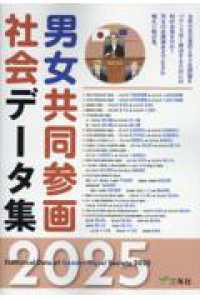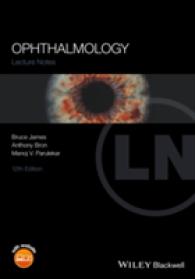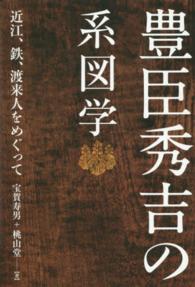- ホーム
- > 洋書
- > 英文書
- > Literary Criticism
基本説明
Between 1791 and 1799 Swiss painter Henry Fuseli turned Milton's Paradise Lost into a series of 40 pictures that were exhibited in London in 1799 and 1800. Starting from Fuseli's adaptation, Calè analyses how visual practices impact on the act of reading and calls into question the separation of reading and viewing as autonomous aesthetic practices.
Full Description
Fuseli's Milton Gallery challenges the antipictorial theories and canons of Romantic period culture. Between 1791 and 1799 Swiss painter Henry Fuseli turned Milton's Paradise Lost into a series of 40 pictures. Fuseli's project and other literary galleries developed within an expanding market for illustrated books and a culture of anthologization used to reading British and other 'classics' in terms of the visualization of key moments in the text. Thus transformed into repositories of virtual pictures literary texts became ideal sources of subjects for painters. Illustrating British literature was a way of inventing a national 'grand style' to fit the needs of a consumer society.
Cale calls into question the separation of reading and viewing as autonomous aesthetic practices. To 'turn readers into spectators' meant to place readers and reading within the dizzying world of associations offered by an emerging culture of exhibitions. Attending to the energized reading effects developed by Fuseli's Gallery we rediscover a new side of the Romantic imagination which is not the solitary mentalist experience preferred by Wordsworth and Coleridge, nor divorced from the senses, let alone a refuge from the crowded public spaces of the Revolutionary period. Rather, Fuseli's embodied aesthetic exemplifies the associationist psychology espoused by the radical circle convening around the publisher Joseph Johnson, including Joseph Priestley and Mary Wollstonecraft. This book analyses exhibitions as important sites of Romantic sociability and one of many interrelated mediums for the literature, debates and controversies of the Revolutionary period.
Contents
Introduction: Turning Readers into Spectators ; 1. The Literary Galleries, the Market, and the Field of Art ; 2. The Spectator Turned Reader: Printed Text at the Galleries ; 3. The Reader Turned Spectator: Visual Narratives ; 4. 'Satan encount'ring Death, Sin interposing': Miltons Allegory and the Politics of Seeing ; 5. The Plot of Adam and Eve ; Conclusion ; Appendix: 'List of the Pictures in the Milton Gallery'








